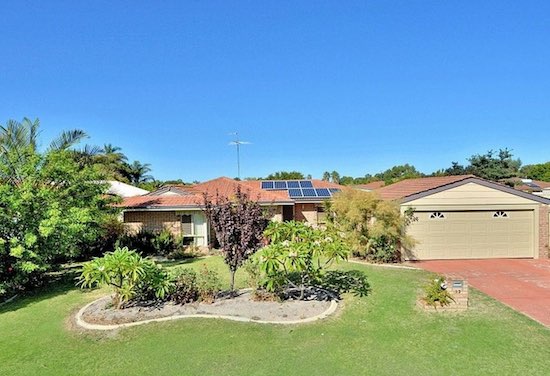The Western Australia government is reportedly mulling the introduction of home battery storage incentives, as the state works to manage a rate of rooftop solar uptake that is expected to grow three-fold in the next decade.
The West Australian reported on Tuesday that energy minister Ben Wyatt was looking at ways to boost battery uptake, alongside possible changes to the state’s rooftop solar tariffs, that would either wind them back or scrap them altogether.
The news, which the West has packaged as a potential hit on state solar subsidies, is being interpreted elsewhere as a good thing, both for solar and battery storage in the state.
According to Redback Energy managing director Brian Innes, it could even provide hundreds of dollars a year of revenue for homes with solar and battery storage.
“Some good practical thinking coming from our Energy Minister,” Innes said on LinkedIn. We can reduce REBS payments to the daytime price and add a NWC payment (Notional Wholesale Capacity) for battery owners which could work out around $600/yr for a 5kva/10kwh VPP enabled system.”
Wyatt says batteries will have a crucial role in WA’s future energy needs by “helping maximise the use of existing infrastructure and reducing the cost of electricity supply for consumers” – a view shared by the Australian Energy Market Operator and most of the nation’s network operators.
On solar, The West Australian reports that Wyatt said Synergy was paying “over the odds” for surplus solar power during the middle of the day, when demand for electricity was typically low and output from Perth’s 240,000 solar homes was high.
He said he had asked the Public Utilities Office to examine the buyback scheme along with the adequacy of incentives for solar panels and batteries.
“The current REBS buyback rate is currently higher than the value of solar energy during the day. The scheme will be part of a more comprehensive examination of the State’s future electricity generation mix,” Wyatt said.
The paper draws a line between these comments and one of the more controversial findings from the recent Australian Competition and Consumer Commission electricity price review, that recommended winding up the federal government’s small-scale solar scheme early, or even closing it immediately.
That scheme, which marginally reduces the total up-front cost of installing solar, is being wound back already, and is completely separate to the state mandated rates that solar households are paid for the energy they export to the grid.
As it stands in WA, rooftop solar homes in Perth and the south-west region of the state receive a solar feed-in tariff from government-owned Synergy of 7.135c/kWh under the Renewable Energy Buyback Scheme (REBS).
But those in regional areas of WA, on the Horizon Power network, can get between 7.14c/kWh and 51c/kWh, depending on their location and system size.
And those in the state who applied for rooftop solar panels in the 201/11 financial year gained access to a 40c/kWh feed-in tariff for 10 years, or 20c/kWh for 10 years if they installed in July 2011.
Seven years later, as UWA Professor and solar industry expert Ray Wills noted in a Tweet (below), it is probably high time for a review of solar tariffs – as long as it is “transparent” and takes into account all of the benefits that rooftop solar offers to the broader grid.
WA #Energy Minister @BenWyatt considers
review of renewable energy buyback for solar panels on homes
Flags incentives for batteries
My take: tariffs set in 2011, so review timelyhttps://t.co/jNBbnVjFxi
But review must be transparent, measure all benefitshttps://t.co/vl0w8pT0Ag pic.twitter.com/LcXJsNvD1c— Prof Ray Wills (@ProfRayWills) July 30, 2018
But Wyatt’s review is, no doubt, also motivated by the head-spinning pace of solar growth in WA, and a need to start boosting the momentum of home battery storage uptake.
As we reported here, the Australian Energy Market Operator expects 134MW of rooftop solar to be installed annually over the next 10 years in WA, resulting in 2,273MW of total installed rooftop PV by 2027-28 – compared to 826MW at the end of December.
Battery storage uptake is expected to grow even more dramatically – AEMO forecasts a potential 10-fold increase in uptake – but that is off a very low base.
As Wills told One Step, as the state gets to rooftop solar penetration of 40-50 per cent in the early 2020s – it’s currently round the 30 per cent mark – significant deployment of battery storage will be needed.
Wills believes much of that battery growth will happen organically, but could easily be accelerated by well designed market incentives.
“I’m confident that, with a Labor government that has pledged to support renewables, they will not do anything to dud the rooftop solar market,” Wills said.
“As well as helping to better manage the impact of rooftop solar on the grid, batteries can help to shave peak loads and ultimately bring the state’s electricity prices down.”
This article was originally published on RenewEconomy’s sister site, One Step Off The Grid, which focuses on customer experience with distributed generation. To sign up to One Step’s free weekly newsletter, please click here.









